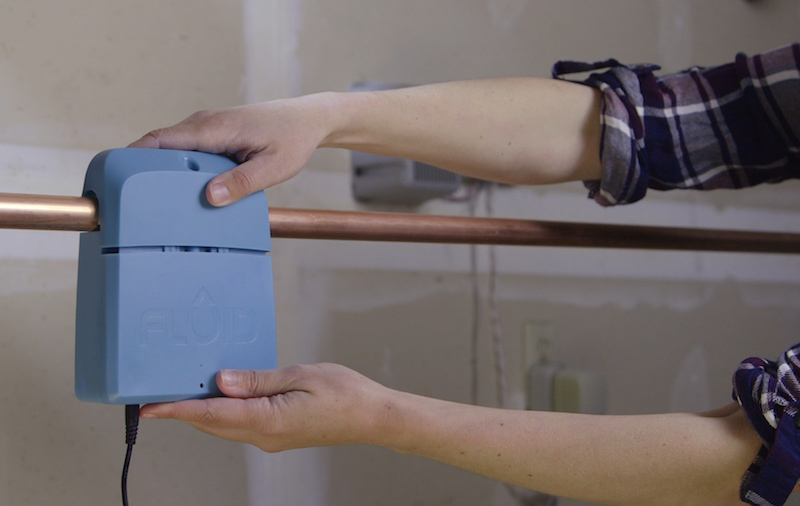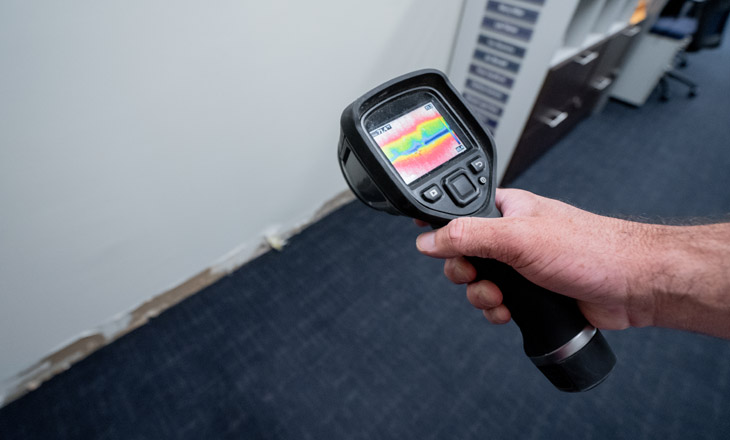Comprehensive Guide to Water Leak Detection for Property Owners and Services
Comprehensive Guide to Water Leak Detection for Property Owners and Services
Blog Article
Cutting-edge Solutions for Very Early Detection of Water Leakages in Buildings and Facilities
From innovative leakage detection technologies to the release of IoT sensors for real-time monitoring, the landscape of leak avoidance is developing rapidly. Automated water flow evaluation systems are reshaping just how leakages are recognized and addressed, leading the method for an aggressive strategy to water leakage detection.
Advanced Leakage Discovery Technologies
Advanced leak detection innovations, outfitted with cutting-edge sensing units and algorithms, play a vital function in swiftly determining and determining water leakages in different setups. Electromagnetic sensing units can identify adjustments in electromagnetic fields caused by water, offering yet one more layer of leak detection capacity.

IoT Sensors for Real-Time Monitoring
In the realm of contemporary water leakage discovery, the combination of IoT sensors for real-time monitoring represents an essential innovation in enhancing proactive leak detection capacities. These sensors supply constant monitoring of water supply, supplying real-time information on water circulation prices, pressure variants, and temperature level adjustments. By leveraging IoT modern technology, these sensing units can detect even the smallest abnormalities in water use patterns, enabling early identification of potential leaks before they escalate into major problems.
IoT sensing units transfer data to a centralized system, where innovative formulas assess the information and produce signals or notices when irregularities are discovered. This real-time tracking ability allows homeowner or facility managers to promptly resolve leakages, lessening water damage, reducing repair work expenses, and saving water resources.
In addition, IoT sensing units can be integrated with building monitoring systems, permitting automatic responses to spotted leakages, such as shutting down water valves or turning on pumps to alleviate the effect of leakages. Generally, the application of IoT sensors for real-time surveillance substantially enhances the performance and efficiency of water leakage discovery in structures and facilities.
Artificial Intelligence Algorithms for Leak Forecast

One key benefit of utilizing artificial intelligence for leakage prediction is its ability to continually find out and boost its accuracy with time. As more data is gathered and fed into the formula, it can refine its forecasts and adjust to changing problems, ultimately raising the dependability of leakage discovery systems.
Moreover, artificial intelligence formulas can assist in determining subtle signs of leaks that may go unnoticed by standard surveillance approaches. water leak detection. By evaluating complicated information embed in real-time, these formulas can supply very early cautions and notifies, permitting prompt treatment and news precautionary upkeep to mitigate prospective water damages and associated expenses
Making Use Of Thermal Imaging for Leakage Discovery
Thermal imaging technology provides an appealing technique for identifying water leakages in numerous systems and frameworks. By making use of infrared radiation and temperature level differences, thermal imaging electronic cameras can identify hidden leakages that are not conveniently noticeable to the nude eye.
One of the crucial benefits of thermal imaging for leak detection is its non-intrusive nature. Unlike conventional methods that may require breaking right into wall surfaces or floorings to find leakages, thermal imaging enables non-destructive screening. This not just saves time and lowers costs yet also decreases disturbance to the structure or framework being examined. In addition, thermal imaging can swiftly scan large locations, giving a thorough introduction of prospective leak resources in a prompt fashion. In general, making use of thermal imaging technology enhances the performance and accuracy of water leak discovery, making it a beneficial device for preserving the honesty of buildings and infrastructures.
Automated Water Circulation Analysis Solutions
How can automated water circulation analysis systems change the detection and monitoring of leaks in numerous see this website systems and infrastructures? Automated water circulation evaluation systems supply a positive strategy to leak discovery by continuously checking water flow prices and patterns. By developing baseline information, these systems can promptly identify inconsistencies that may suggest a leakage, enabling timely treatment to protect against extensive damages.
These systems make use of advanced formulas to assess real-time data and offer prompt alerts when anomalies are identified, permitting quick activity to be taken. In addition, automated water flow analysis systems can be incorporated with structure monitoring systems or IoT platforms, enhancing general effectiveness and making it possible for remote monitoring capabilities.
Furthermore, the data accumulated by these systems can be used for anticipating upkeep objectives, aiding to recognize prospective weak factors in the facilities before leaks occur. Generally, the implementation of computerized water flow evaluation systems can substantially enhance leak detection and management methods, inevitably leading to cost savings, lowered water wastefulness, and raised sustainability in structures and infrastructure.

Final Thought
Finally, the assimilation of innovative leak detection innovations, IoT sensing units, machine knowing algorithms, thermal imaging, and automated water flow analysis systems offers innovative services for early detection of water leaks in structures check my reference and framework. These modern technologies make it possible for real-time surveillance, forecast of leakages, and reliable discovery techniques to stop water damages and waste. Executing these services can help in maintaining the honesty and sustainability of water supply in different setups.
Report this page